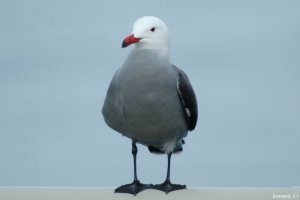Now that we have the 5 kingdoms of life straightened out (Bacteria, Protoctista, Animalia, Plantae, and Fungi), it’s time to move on in my explanation/exploration of scientific nomenclature. One of the things that had always puzzled me about the naming of things was how many different levels of organization there are. This burgeoning complexity is the result of the recent rise in cladistics and phylogenetics, which has forced biologists to rethink the good old modified Linnean system that had served us so well until, say, the 1960s. That system, with its easily memorized hierarchy (King Philip Came Over For Good Spaghetti: Kingdom, Phylum, Class, Order, Family, Genus, Species) has now been augmented with infraorders, superorders, superfamilies, and many more interstitial groupings.
This profusion of classificatory niches does cause confusion to the uninitiated. Back when I first started my bird study course through the Cornell Laboratory of Ornithology, I was prompted to browse through my bird guide to see what I could learn. I was puzzled by the term Laridae, for instance, which it turns out works just fine in the good old Linnaean system. It’s just the taxon at the family level comprising gulls, terns, and skimmers. Of course, because certain gulls are more like other gulls than certain other gulls are, we can’t just have one genus for gulls. We have several genera, all grouped into a subfamily, Larinae. So your North American black-backed gulls are both in the genus Larus, while your kittiwakes are in the genus Rissa. Similarly, the various noddies, small terns, large terns, typical terns, etc., are grouped into another subfamily, Sterninae, in the family Laridae.
And, as long as we’re dealing with family levels, there’s a handy trick we can use to keep these scientific names more user friendly: just lowercase the family name (in this case Laridae) and change the ending– -idae for animals, or -aceae for plants (the spelling of which trips up numerous writers)–to -d or -ds. Voilà: a much easier handle to use as you see fit. The Bromeliaceae, for example, become the familiar bromeliads; the Centrarchidae (black bass, sunfish, crappies) become the centrarchids; the aforementioned Laridae (represented here by a cooperative Heermann’s Gull I photographed on a visit to the Monterey Bay aquarium in February), become the larids.
As with all systems that promise to simplify your life, though, there are some caveats. For instance, you can’t do this on the genus level: parulids as a quasi-vernacular name for the family Parulidae (New World warblers) is fine, but as a name for the genus Parula (4 species, among them Northern Parula, Tropical Parula, Crescent-chested Warbler, and Flame-throated Warbler), for example, it doesn’t work. According to my bible on matters scientificoeditorial, one should
avoid applying the ‘id’ or ‘ids’ endings used for families to genera. Also avoid applying a plural ending to a scientific genus name; the scientific name of the genus is always singular. (Section 22.2.4.2, page 350)
So, how do you keep track of all these taxa? How do you know whether you’re dealing with a genus name, a specific epithet, an order, or some newfangled interstitial creation like an infraorder? Well, there’s a website for that. (As soon as “there’s an app for that,” I’ll let you know. The various taxonomy apps I’ve seen so far are pretty 1.0; the best of the bunch, called simply KPCOFGS, is pretty minimal and, while YMMV, the search times can be quite a bit longer than the developer claims. I’m still waiting for a user-friendly iBird-type app with a more comprehensive taxonomy listing than North American avifauna.)

